EGYPTOLOGY: All hail the king!
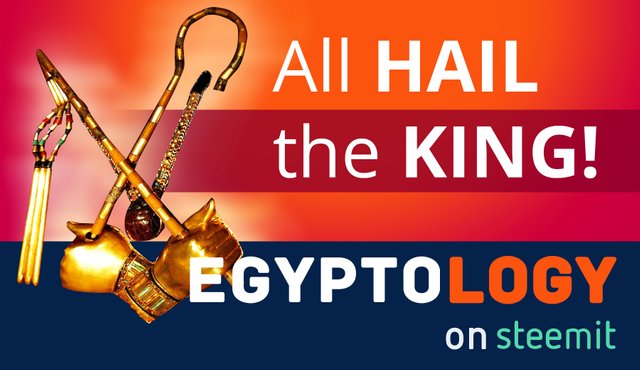
When you think of an Egyptian Pharao you probably have a certain picture in your mind: the blue-golden-stripes of the King’s headdress, the crossed arms position, and the straight looking full of confidence – a King’s behaviour, simply said.
The term ‘Pharao’ is deeply connected with kingship in Ancient Egypt, but did you know what it really meant? It was written in hieroglyphs like this: 𓉐 𓉼 = transliterated = pr ꜤꜢ = spoken [per-aA] = means ‘the great house’! So the king was the exclusive authority to provide a house or home for his people! By leading the people of the ‘two lands’ (Upper and Lower Egypt) in a supportive way he was allowed to have been named the per-aA, the PHARAO.
The Egyptian Language is quite complicated, so I want to teach you a bit of reading hieroglyphs in future posts. But today I want to give you a brief insight into the pictorial expressions of the Ancient Egyptian Pharao.
Vestments of a King
The Crown

The Blue Crown
There were many other crowns used by the kings and one important example that were mostly used in times of war was the blue crown: 𓋙. We can see this in pictures of Pharao Tutankhamun as well as Akhenaten.
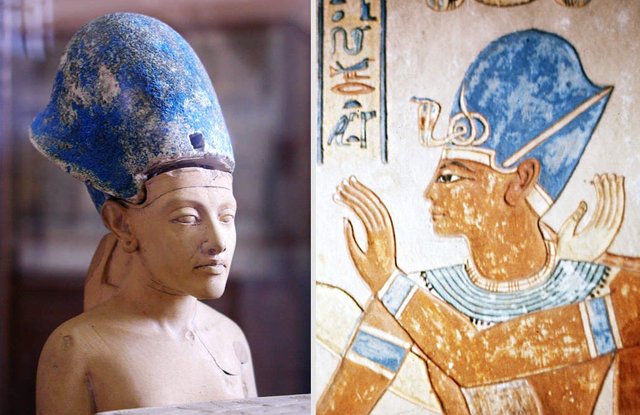
Image 2b (right): Ramses III. in the tomb of Amenherkhepshef, QV 55, Luxor, Queens Valley.
The ‘Nemes’
The well known pharaonic headdress is called ‘Nemes’. It is still controversial discussed what it really meant and how it was worn. In TV documentaries you see often just a scarf with blue and yellow or golden stripes thrown over the head. But as you can see on the following picture of the famous mask of Pharao Tutankhamun, the Nemes was bound together on the backside like a braid.
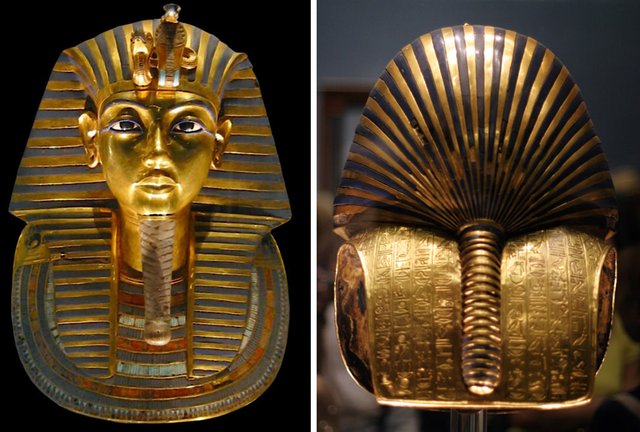
Another interesting fact might be that Egyptologists never found an archaeological evidence of a real existing crown or a nemes.
Women in high positions such as the royal wifes or daughters often wore headdresses that can not be considered as crowns but at least as a sign of the elite.
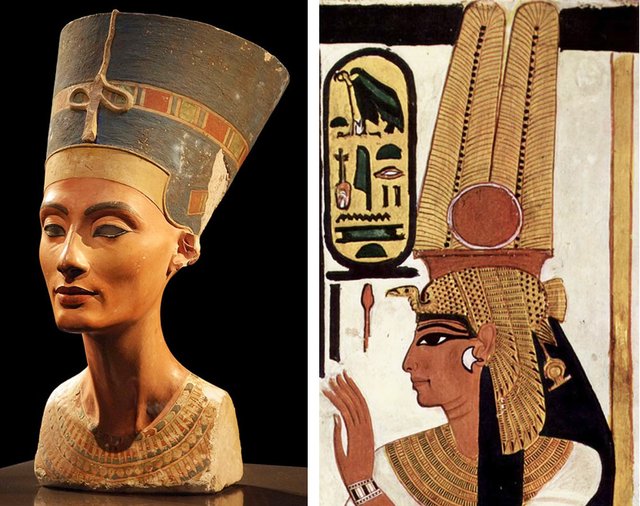
The Beard
There are two so-called ceremonial beards: the straight one and the bent one. When you see a picture with a Pharao that has a bent beard, it means the deceased King is depicted! These beards were generally false beards, that were fixed on the chin.
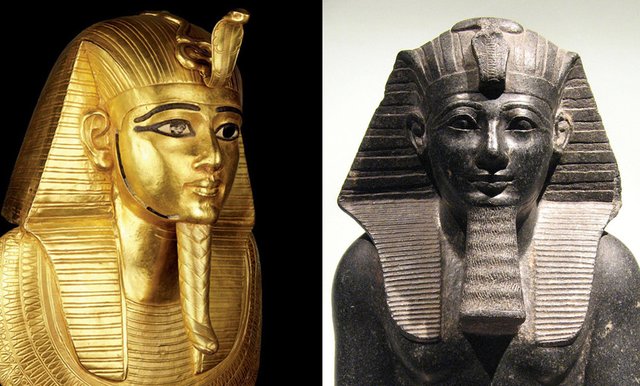
The beard was so important that even female leaders like Hatshepsut put on an artificial beard to show she was the first ‘man’ of the state. But, although she was acting and looking like a man, she still considered herself as women, which is shown by using the female grammatical form in her name and elsewhere. In other words: SHE was still called a SHE and not a HE. ;)
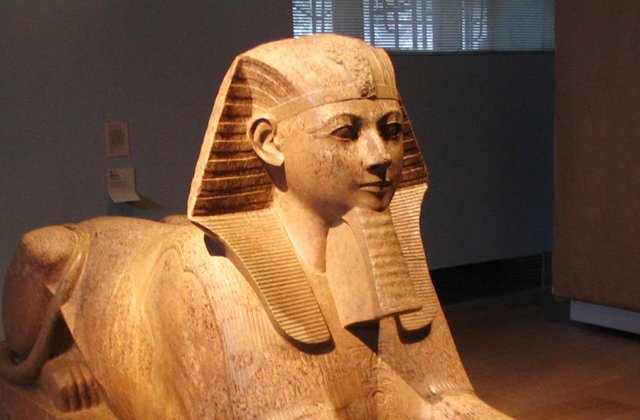
The Crook and the Flail as Scepters
Pharaos had often a so-called crook or ‘crosier’ in his hands. The name of this was ‘heqa’ and is seen by most scholars as a shepherd’s crook and meant ‘to rule’. But the hieroglyph heqa 𓋾 also was used as the word for ‘magic’. The God Osiris used the crook in the death court to judge over the deceased and decided if their Ba, the moving part of the soul, would be able to pass easily to the afterlife.
The flail 𓌅 , often crossed with the crook, is also a sign of the Pharao being the ‘shepherd’ of his people and is seen to be actually as a fly whisk.
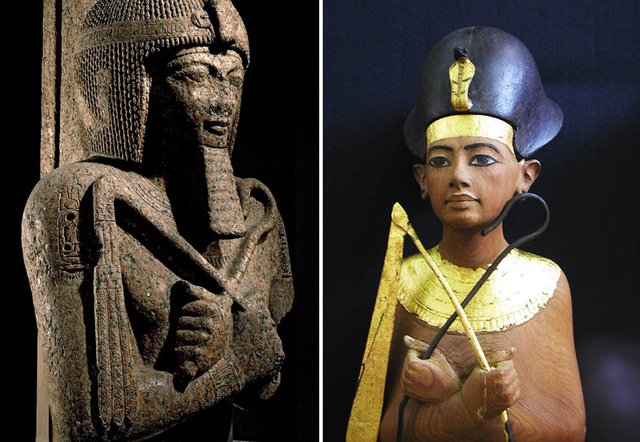
Image 7b (right): Ushebti figure of Tutankhamun, Egyptian Museum Cairo.
Like a Boss King
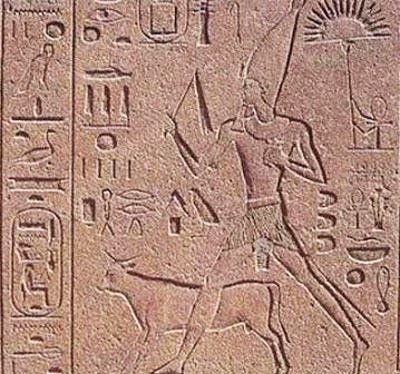
The Animal’s Tail

Don’t mess with the Pharao
The Ancient Egyptian percieved their own country as the centre of the world. Everything that was not Egyptian was considered ‘outside of their peaceful environment’. When it came to conflicts with intruders from other countries such as from the north or from the south (less from the west because of the huge desert area), the Pharao had to make sure that this ‘egyptian world’ was safe. He had, of course, to defend Egypt against the foreign invasion. This is depicted in the often used motive of the ‘Beating of the Enemy‘. You can see this in many variations but always with the same message: the great Pharao (in much bigger size as his opponents) grip the enemy or enemies on their scalp(s) or and erect the other hand, holding a weapon, that is going to swing down on them.

Image 10b (centre): Drawing of Pharao Seti I.
Image 10c (right): Ramses II., Abu Simbel.
Sources and further reading:
• Budge, E. A. Wallis (Ed.): The Book of the Dead. The Papyrus of Ani in the British Museum. Longman, London 1895.
• Staehelin, Elisabeth, in: Lexikon der Ägyptologie IV, 1982, cols. 613–618, s.v. Ornat.
• Fischer, Henry G., Notes on Sticks and Staves in Ancient Egypt, Metropolitan Museum Journal, Vol. 13 (1978), pp. 5-32. http://www.jstor.org/stable/1512707
• Hilliard, Kristina / Wurtzel, Kate, Power and Gender in Ancient Egypt: The Case of Hatshepsut, Art Education, Vol. 62, No. 3 (May 2009), pp. 25-31. http://www.jstor.org/stable/20694765
• Uphill, Eric, The Egyptian Sed-Festival Rites, in: Journal of Near Eastern Studies 24, 1965, No. 4, pp. 365–383.
• https://dornsife.usc.edu/what-is-a-king-to-do/historical-context/
• http://www.arabworldbooks.com/egyptomania/sameh_arab_sed_heb.htm
Images:
Image used in the editorial picture: Source
Image 1: Source / Image 2a: Source / Image 2b: Source / Image 3a: Source / Image 3b: Source / Image 4a: Source / Image 4b: Source / Image 5a: Source / Image 5b: Source / Image 6: Source / Image 7a: Source / Image 7b: Source /Image 8 Source / Image 9: Source / Images 10a–c: Source
Feel free to ask all the question of what you always wanted to know about Ancient Egypt. That’s my job and my passion. Let’s discuss your thoughts and ideas.

If you liked this article, please follow me on my blog @laylahsophia. I am a german Egyptologist writing about ancient and contemporary Egypt, history of science, philosophy and life.
I simply love your articles, what great content and quality of posting you offer the community here on Steemit and abroad.
Thanks a lot and namaste :)
Thank you so much, @eric-boucher. :)
The gratitude is mutual then, namaste :)
I am glad I stumbled upon your article. It is very interesting and I've learned a lot about ancient Egypt, so thank you and I am now following you. In your research and journey, what are the most fascinating discoveries you have come across? Have you learned anything that has changed your mind or opinion of written history?
Hi @belovebelight – nice name! ;) Actually, I am a normal archaeologist. Most excavations that excite me are not so spectacular for others since the stuff we bring out of the sands is often either fragmented or has not the appearance of a real "treasure" like the Tutankhamun tomb. ;) The most emotional excavation we had was once when we dug in a cemetery and found the 2.500 years old remains of a young woman with three babies. Fortunately, it was not my tomb shaft but the shaft of my colleague and we discussed this long until the night. But this happens quite often. Because where there is life there is death. And we are the witnesses of this tragedies of the past.
In general, my opinion about the Ancient Egyptians did not change at all. When I started to study this subject I was already open-minded. But my approach to gain knowledge for a deeper understanding of this culture got a twist: I was no longer satisfied with "opinions" of others. I needed profound scientific proof.
But what was really surprising to me was, when I - for myself - discovered the 3-dimensional language. This is really fascinating. And I am still researching. I have doubts that the hieroglyphs just came up suddenly out of the blue. There is a link missing and I try to find out the origins of this amazing language.
Thank you for the compliment and the response. It sounds like you truly enjoy your job, which is amazing! Adventure and learning new things; that is always a "yes, please" in my book! :)
I think it is amazing that you are open-minded. I can say that my mind has opened a lot over the past several years. To look back upon my life I cannot believe how close-minded I used to be. Once I began to travel the world and experience other cultures and learn about them, I began to have a greater appreciation and understanding of the world. Even if it was a small step, it was something I am truly grateful for and it was a huge eye-opener. I am glad you are able to have such wonderful experiences that lead you to knowledge and growth.
Hard evidence and proof are always the best way to go about things, especially in the realm of science, in my honest opinion. I can attest that even among religious beliefs I used to have when proof came to challenge my own opinions and beliefs I had to step back and let the evidence talk, begin to reflect and make corrections. It is wonderful you are able to dig deeper (no pun intended) and find the truths out there.
Language is by far very fascinating to me as well. I never could imagine reading hieroglyphs so I think that is amazing, kudos to you! I am looking forward to seeing more of your journey here on Steemit. I hope you are able to uncover many mysteries to help us as a human race better ourselves and learn from History. Be well and I wish you success in your endeavors!
Thank you so much! Your words are touching. <3
I am planning to give a hieroglyphs-lecture exclusively for Steemit, but it is still in the making. I am sure, you will be able to read some hieroglyphs after. Stay tuned. ;))
Great article, as always. Do you know how many "She's" there were in the era of the Pharaos?
Have you ever read the book "Ramses"? It is a novel but I was reminded on it when you said that the Pharao had to be in a good shape and did some training. It was part of that book, too.
I can recommend it. There is one character which is quite unique, it is the ambassador and diplomat "Akasha", I guess, was his name. It was during the conflict with the Hittites (don't know if I get it right), when I remember that correctly.
Absolutely right. Ramses II. was in war with the Hittites and when both parties were exhausted one time they signed the first peace contract of the world - one version written in Cuneiform and one version in Hieroglyphs, which - of course - claims Ramses to be the winner (that was surely not the case). This ist what we know from historical records.
I never heard of that novel yet. I like such stuff when facts and fiction are mixed. ;)
I don't know exactly how many real Pharaos were female, but I think there were only a handful of such leaders. But women played nevertheless a great role even in politics. Maybe I will write something about women's power in one of my next articles. ;)
Ramses "Der Sohn des Lichts" von Christian Jacq - There are altogether five book volumes.
I am pretty sure you would like reading it.
Glad, to maybe have inspired you for your next article:-)
Very detailed and informative. There is a lot of knowledge about the Pharaoh and the culture surrounding him and in one exceptional case, her that I was just not aware of. Thanks.
It's a pleasure :)
I am grateful to you for sharing your deep knowledge of Egypt. I am gradually becoming more aware of how influential Egypt has been, particularly via the Abrahamic traditions, and thus the West.
Greatly looking forward to more.
Thanks!
Thank you! :)
This is a well detailed post about the pharoah clan,it was a great time indeed during the pharoah era. i feel like I've just lived in that era of history after reading through your post. I might have to read it a second time to properly digest all the info, thanks for sharing!
Thank you for reading! :)
I am always glad to read your articles about Egypt and the Pharaohs, I've been always interested in their history, maybe because I'm from Lebanon - so close by to Egypt :D
Oh nice! I have colleagues that are excavating in Lebanon and during University I studied also Archaeology of Palestine and the Levante, which includes the Lebanon, of course. :)
Awesome nice info friend.... Vote 4u
I simply love your articles, what great content and quality of posting you offer the community here on Steemit and abroad.
Thanks a lot :)
Very nice post👍 @laylahsophia